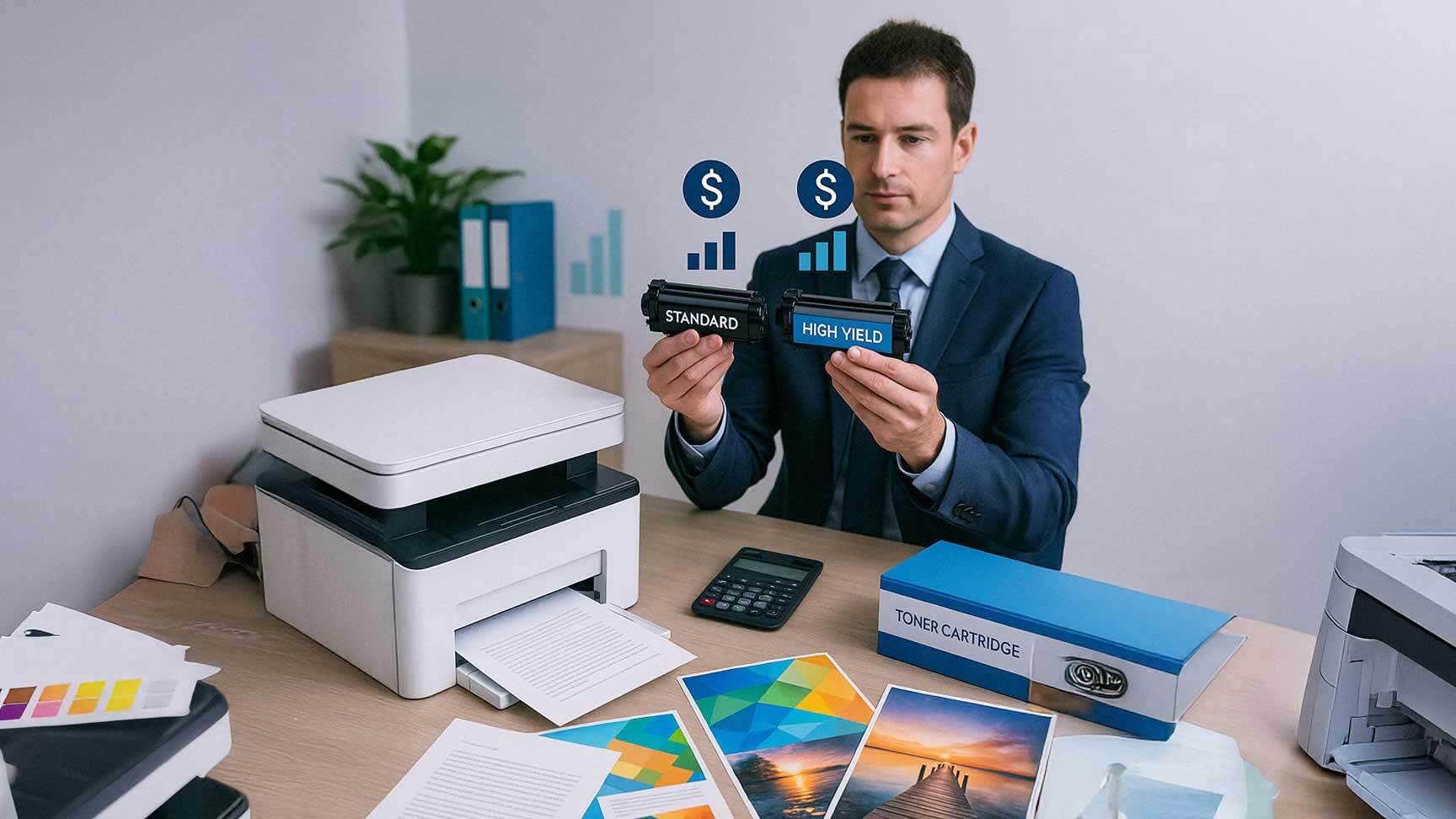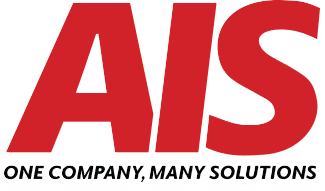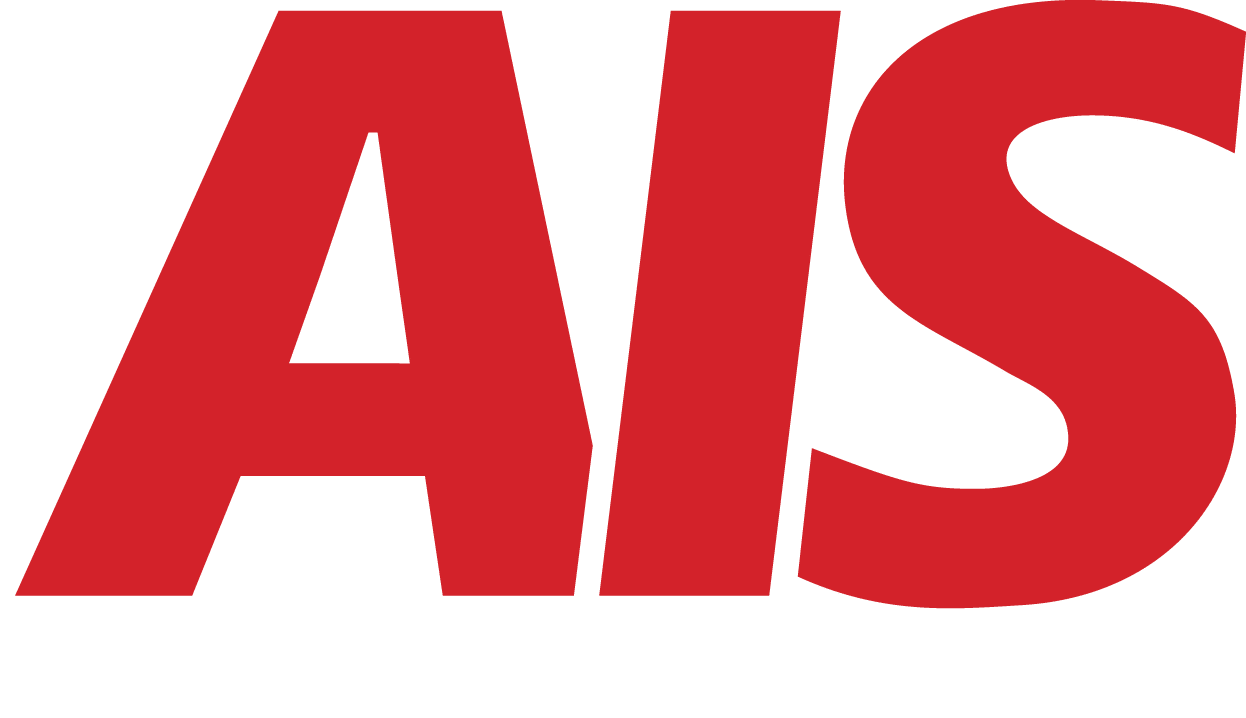What Is Page Yield And Why Does It Matter When Choosing an Office Printer?
July 23rd, 2025 | 5 min. read

Page yield refers to the estimated number of pages you can print from one toner or ink cartridge. It’s usually listed right on the box, something like “2,300 pages” or “up to 10,000 pages.”
This number provides a general indication of how long a cartridge is expected to last before needing replacement. But as with most marketing claims, there’s more to the story.
How Page Yield Is Measured (And Why It’s Not Always Realistic)
Most major printer brands (like HP, Xerox, and Kyocera) follow standardized testing from the International Organization for Standardization (ISO) and the International Electrotechnical Commission (IEC).
For black-and-white printers, ISO/IEC 19752 is the standard. For color printers, the standard is ISO/IEC 19798.
These tests utilize controlled environments and identical documents, printed repeatedly until the cartridge is depleted. The result provides a baseline for comparing one cartridge to another.
What 5 Percent Page Coverage Looks Like
The 5 percent standard was chosen to create a level playing field; however, it's not entirely realistic for most business printing.
Here’s what different types of print jobs typically average:
- A short email or basic text document: around 5 percent
- An invoice or simple form: 10 to 15 percent
- A presentation slide or brochure: 25 to 50 percent
- A full-page photo or marketing flyer: 75 percent or more
The more coverage, the fewer pages you’ll get from the same cartridge.
Why Your Actual Yield Might Be Higher Or Lower
Several real-world factors affect page yield:
- Page coverage: More ink or toner per page means fewer total pages.
- Print settings: Draft mode and grayscale can extend yield. High-quality settings reduce it.
- Environmental conditions: High humidity or dust can affect toner usage and paper feed accuracy.
- Printer type and age: Some printers are more efficient than others. Older devices may waste more toner.
Real-world Factors That Affect Yield
Even your choice of paper and the frequency of printer use can impact yield. For example, starting up a printer from idle often uses a burst of toner or ink to recalibrate. If you print in short, sporadic bursts, your cartridges may run out sooner than expected.
Why Page Yield Matters When Buying a Printer
It Impacts Your Total Cost of Ownership
Many businesses look at the printer price tag and stop there. However, a cheaper printer with a low page yield may end up costing more over time if it consumes cartridges quickly.
Page yield helps you understand long-term operating costs. The more pages per cartridge, the fewer replacements you’ll need, and the lower your total cost per page.
Higher Yield Can Mean Fewer Interruptions And Replacements
If your team prints a lot, running out of toner can slow productivity. High—yield cartridges last longer, which means fewer change-outs, less downtime, and fewer supply orders.
This matters even more if your printer is in a shared or high-use area.
How Page Yield Affects Managed Print and Service Contracts
If you're working with a Managed Print Services (MPS) provider, page yield plays a direct role in your contract terms. Costs are often calculated per page. The higher your yield, the more control your provider has over supply schedules and service needs.
Yield vs Cartridge Price: The Price Per Page Calculation
To understand the value of a toner or ink cartridge, divide the cost of the cartridge by its page yield. This gives you the cost per page.
Example:
- Standard cartridge: $80 with a 2,000-page yield = 4 cents per page
- High-yield cartridge: $120 with a 5,000-page yield = 2.4 cents per page
Although the high-yield option incurs higher costs upfront, it proves more efficient in the long run.
How to Choose the Right Page Yield for Your Business
Estimate Your Monthly Print Volume
Begin with a realistic estimate of the number of pages your office prints each month. You can use print logs from your current machines or ask your team for input.
For example:
- Low volume: under 500 pages per month
- Medium volume: 500 to 2,000 pages
- High volume: over 2,000 pages
The more you print, the more critical page yield becomes in your buying decision.
Know Whether Your Print Jobs Are High or Low Coverage
Think about the type of documents you produce. If you're printing plain invoices or internal memos, a lower-yield cartridge may be sufficient. If you're printing brochures, newsletters, or detailed spreadsheets, aim for higher-yield options.
Understand The Tradeoff Between Standard And High-yield Cartridges
Most printers offer both standard and high-yield cartridges. High-yield options cost more upfront but last longer. Standard cartridges may be cheaper but require more frequent replacements.
Some printers only support standard yields, which can drive up your long-term costs. Be sure to check this before making a purchase.
When To Prioritize Page Yield Over Printer Price
If you're printing regularly and care about long-term efficiency, page yield should take priority over the printer's sticker price.
A $200 printer that uses $100 cartridges every month may cost more than a $400 printer that uses $150 cartridges twice a year.
Final Thoughts: Page Yield Isn’t Just a Number
Page yield helps you understand how much printing power you’re getting from your toner or ink. It may not be the flashiest spec on the box, but it has a significant impact on the long-term cost of running your printer.
Before you buy your next printer or sign a managed print agreement, ask these questions:
- What is the page yield of the toner or ink cartridges?
- Is that based on 5 percent page coverage?
- What’s the real-life expected yield for our print types?
- What is the actual cost per page?
The better you understand these numbers, the more confident you’ll feel choosing a machine that fits your needs and budget.
Need help choosing a printer with the right page yield for your business?
AIS can help you compare options, calculate real cost per page, and recommend solutions that match your print volume and workflow. No jargon. Just honest advice.
A true southerner from Atlanta, Georgia, Marissa has always had a strong passion for writing and storytelling. She moved out west in 2018 where she became an expert on all things business technology-related as the Content Producer at AIS. Coupled with her knowledge of SEO best practices, she's been integral in catapulting AIS to the digital forefront of the industry. In her free time, she enjoys sipping wine and hanging out with her rescue-dog, WIllow. Basically, she loves wine and dogs, but not whiny dogs.
Topics:


